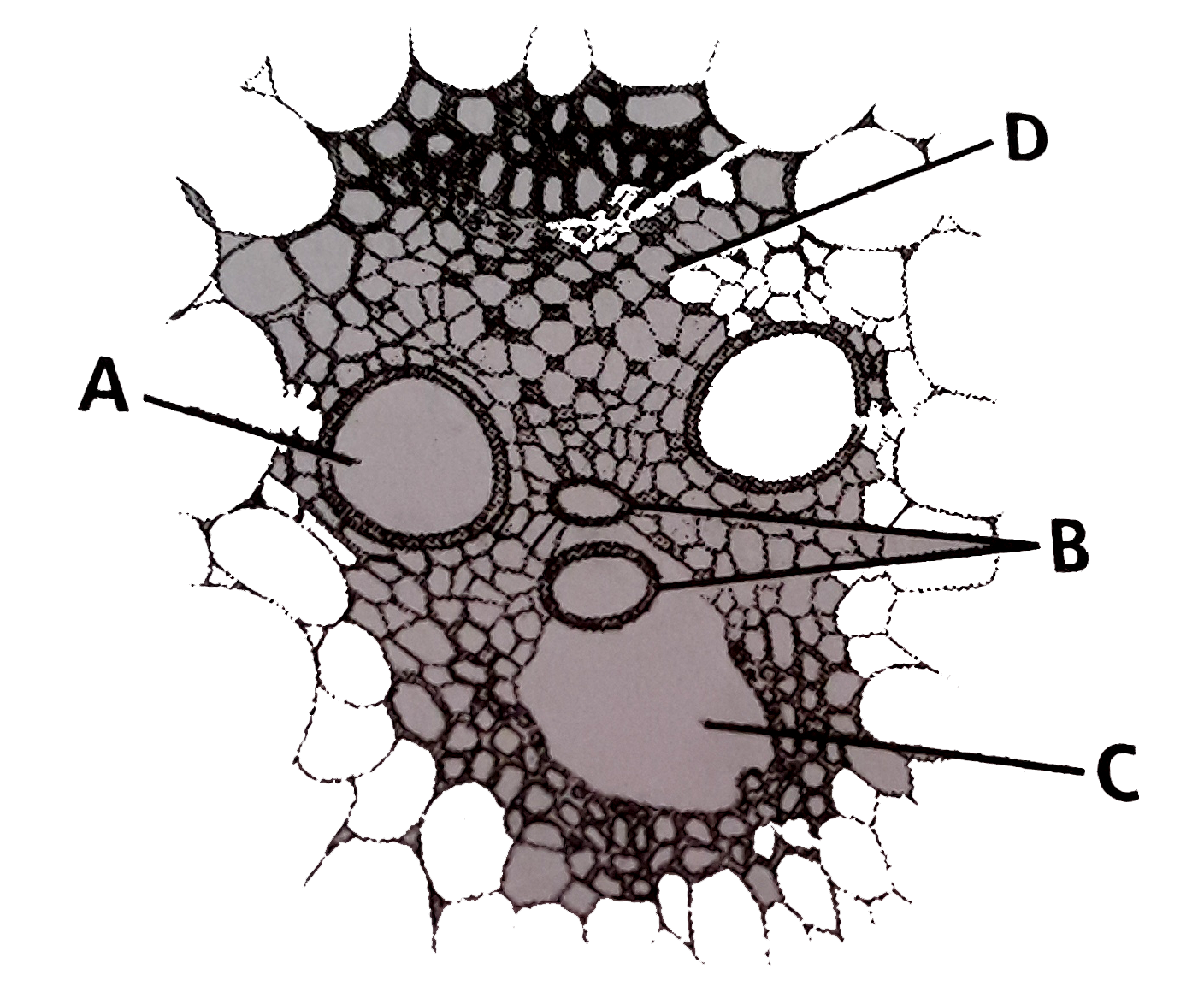Select the features which are not seen in algae.a)Variable shapes of chloroplasts,b)Embryo formation,c) Vascular system,d)Non-jacketed sex organs
a and b
b and c
c and d
a and d
To solve the question, we need to identify which features are not present in algae from the options provided. Let's analyze each option step by step.
1. Variable shapes of chloroplasts:
- Algae can have variable shapes of chloroplasts, such as griddle-shaped or reticulated chloroplasts. Therefore, this feature is seen in algae.
2. Embryo formation:
- Algae do not exhibit embryo formation. They are not classified as Embryophytes, which include land plants that undergo embryo development. Thus, this feature is not seen in algae.
3. Vascular system:
- Algae lack a true vascular system. Vascular systems are found in higher plants, starting with pteridophytes. Hence, this feature is not seen in algae.
4. Non-jacketed sex organs:
- Algae possess non-jacketed sex organs, which are unicellular. The male sex organ is called an antheridium, and the female sex organ is called an archegonium. Therefore, this feature is seen in algae.
Conclusion:
The features that are not seen in algae are:
- b) Embryo formation
- c) Vascular system
Final Answer:
The correct options are b) Embryo formation and c) Vascular system.
---
- Algae can have variable shapes of chloroplasts, such as griddle-shaped or reticulated chloroplasts. Therefore, this feature is seen in algae.
- Algae do not exhibit embryo formation. They are not classified as Embryophytes, which include land plants that undergo embryo development. Thus, this feature is not seen in algae.
- Algae lack a true vascular system. Vascular systems are found in higher plants, starting with pteridophytes. Hence, this feature is not seen in algae.
- Algae possess non-jacketed sex organs, which are unicellular. The male sex organ is called an antheridium, and the female sex organ is called an archegonium. Therefore, this feature is seen in algae.
The features that are not seen in algae are:
- b) Embryo formation
- c) Vascular system
The correct options are b) Embryo formation and c) Vascular system.
Topper's Solved these Questions
Similar Questions
For the common features between chara and Marchantia are
(a) Dioecious,
(b) Flagellated antherozoids
(c) jacketed sex organs
(d) protogynous
(e) Female sex organ is nucule or oogonium
View SolutionSelect the statement which explains best parasitism.
(a) One organism is benefited.
(b) Both the organisms are benefited.
(c) One organism is benefited, other is not affected.
(d) One organism is benefited, other is affected.
View Solution
Knowledge Check
the parts which are not present in an animal cell is
A. cell membrane B. chloroplasts C. cell wall D. mitochondriaAA nd BBB and CCAand dDB and DIn the following passage, identify Y: Non-vascular plants whose plant body is not differentiated into true roots, stems and leaves and have unicellular and non-jacketed sex organs are included in the Taxon Y. Also, the plants included in the taxon are chlorophyllous plants which are autotrophic when it comes to their mode of nutrition. These plants may be of green, yellow, orange, red colour, etc.
AThallophytaBBryophytaCGymnospermsDPteridophyta$ Cryptogams are those plants which have large sized sex organs.
! Pteridophytes are the cryptogams without embryo formation.AIf both As and R are correct and R is correct explanation of AsBIf both As and R are correct but R is not correct explanation of AsCIf As is correct, R is wrongDIf both As and R are wrong.
Select the statement which best explains commensalism
(a) One organism is benefitted (b) Both the organisms are benefitted
(c) One organism is benefitted , other is not affected (d) One organism is benefitted , other is affected .
View SolutionFill up the blank spaces in the tabe below by selecting the correct option.
Phylum/ClassExcretory organCirculatory systemRespiratory organArthropodaABLungs/Gills/Tracheal systemCNephridiaClosedSkinDMethanephridiaOpenE
View Solution
Refer to the given figure which represents a section of vascular bundles as seen in T.S. of a monocot stem and select the option that correctly labels A, B, C and D
View SolutionRead the featured given below and select the option for animals which correctly describes the features mentioned:
I. All are exclusively marine, triploblastic, coelomate organism with a water vascular system.
II. A small group of warm-like marine animals with the organ system levels of the organization.
III. The body is covered by a calcareous shell and is unsegmented with a distinct head, muscular foot, and visceral hump.
IV. Triploblastic, pesudocelomate animals in
which alimentary canal is complete with a well developed muscular pharynx.
View SolutionRead the following statement regarding bryophytes and select the correct answer.
(i). Bryophytes lack true roots, stem and leaves.
(ii). The main plant body is haploid
(iii). Sex-organs are unicellular and non-jacketed
(iv). Fertilisation produces an embryo inside the water.
View Solution
